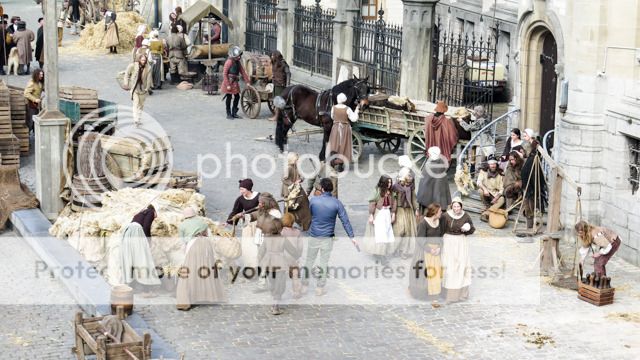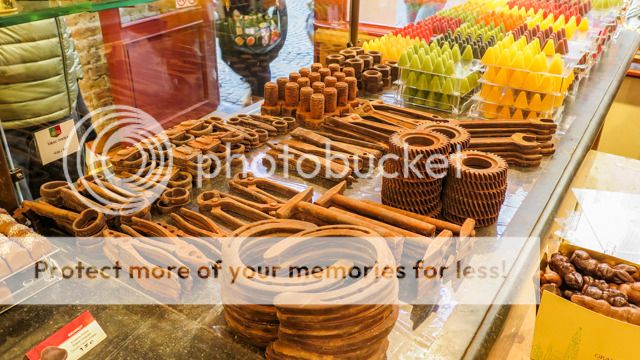When my wife Elfa planned our vacation in Berlin to celebrate her brother’s 80th birthday, she checked if it was possible to add another week somewhere in Europe through the RCI timeshare exchange. When Knokke-Heist in Belgium showed up as an option, she had no idea where it was and why to go there. But after some research, she discovered it was not far from Bruges, which she has wanted to visit for a while, we decided to go there. It is a town of about 35,000 people, located along the North Sea. Although the water is cold, it has beautiful beaches, which draw a lot of visitors and the people nearby with second home condominiums. I cannot imagine how crowded it can be in the summer, but on a Sunday on our visit, with the outside temperature in the low 40s, the streets were packed with people visiting high end stores, strolling on the promenade along the water and crowding the restaurants, including their outdoor patios. The restaurants offered tasty food, priced comparatively to good restaurants in San Francisco. The only reason why we were able to get a timeshare exchange for a two bedroom spacious apartment, was because it was not in their high season, and quite cold. Because of the humidity, when the temperature dropped below the 40s in the evening, it was not enjoyable to be outside and we were just wishing to be back in San Francisco, where our warm sweaters and coats can go back in the closet.
Driving from Knokke to Bruges took less than 30 minutes, and parking our rental car in the underground parking (a note for your travel plans), it felt like we came out into the 16th century. The recorded history of Bruges goes back to 840 A.D. The earliest known artwork – The Last Judgment is a triptych by Hieronymus Bosch, created after 1482. Bruges is a very good example of how through the history fortunes of the geographic locations change, but the beauty preserves its true values. The name means “bridge” because it had many canals. In the twelfth and thirteenth centuries, it was center for wool trade and became an important trading destination and one of the leading ports in Europe. It was well known for weaving and its population grew to 200,000 people, around 1400 A.D. And then the decline started. By 1900, the population dropped to 50,000. After 1965, the original medieval city experienced a renaissance. You can see images of the results on the web. International tourism has boomed, and new efforts here resulted in Bruges being a designated European Capital of Culture. It attracts two million tourists annually.
Besides the beautiful buildings, it has another attraction – every second store sells chocolates. Some offer to taste before you buy, others offer it in a liquid form. I said, “Yes” to both options. If the store did not sell chocolate or clothing, then it offered the highest number of beers I’ve ever seen. In spite of the low temperatures, there were a lot of tourists and we had a very good time.
The next day we drove to Gent, which has even more old buildings, canals and bridges. It is a student town. It does not have same charm as Bruges, but it’s worth including in the list of places to visit in your lifetime. In Gent, we encountered a movie set for some medieval production. It looked very real, if not for the sound person in the middle of the crowd.
Enjoy and Share.
P.S. I usually photograph others, it is the first time you can see the image of me with my wife Elfa and our daughter Alona enjoying delicious hot chocolate. The tools and the horseshoe are made from chocolate. I did not taste them. Maybe I will, next time.
Do Not Keep Me As A Secret!
Smile And Please SHARE It With A Friend!
Cheers,





